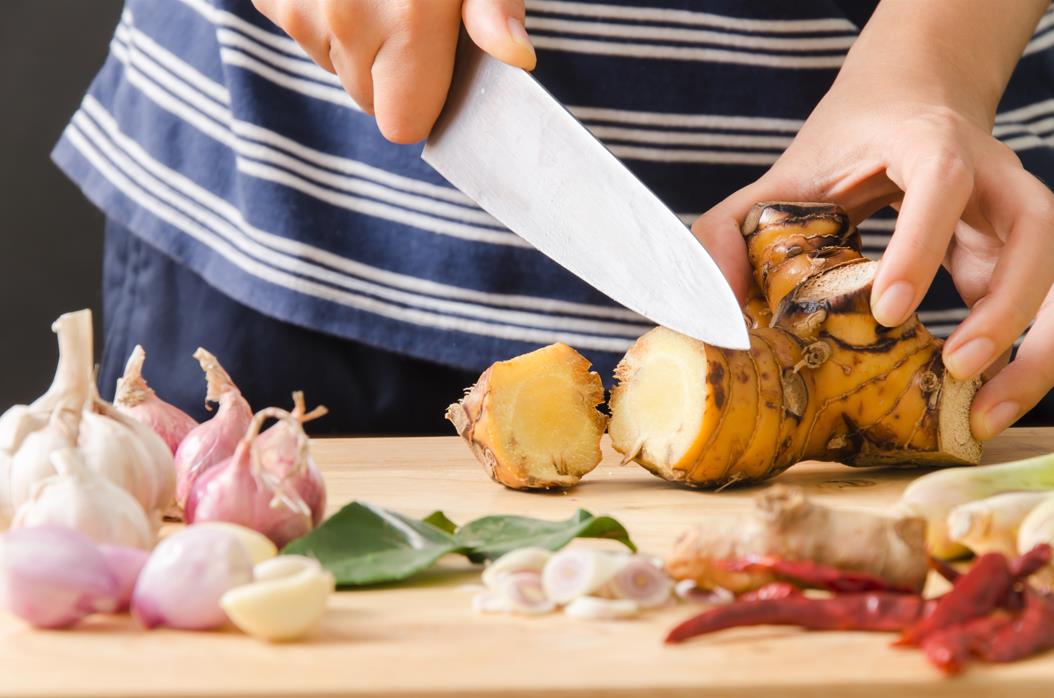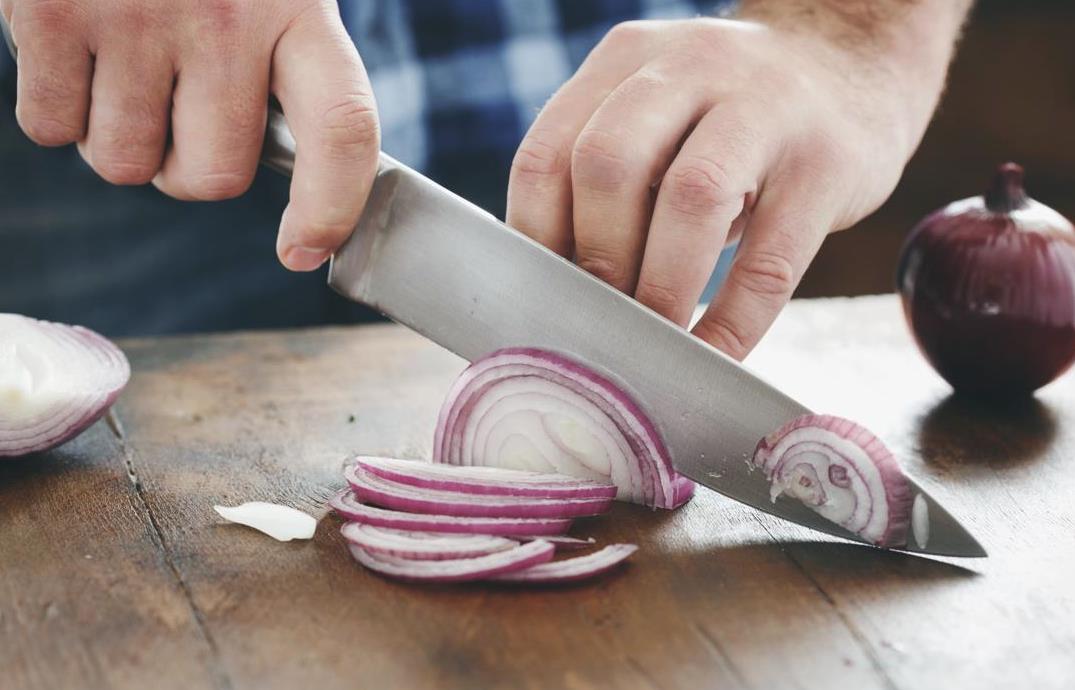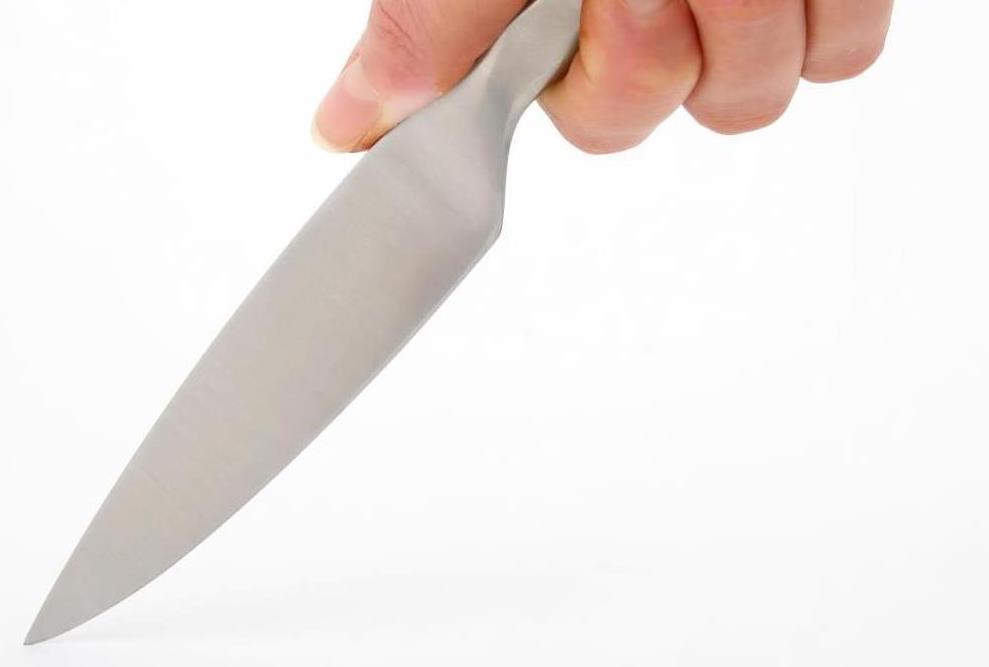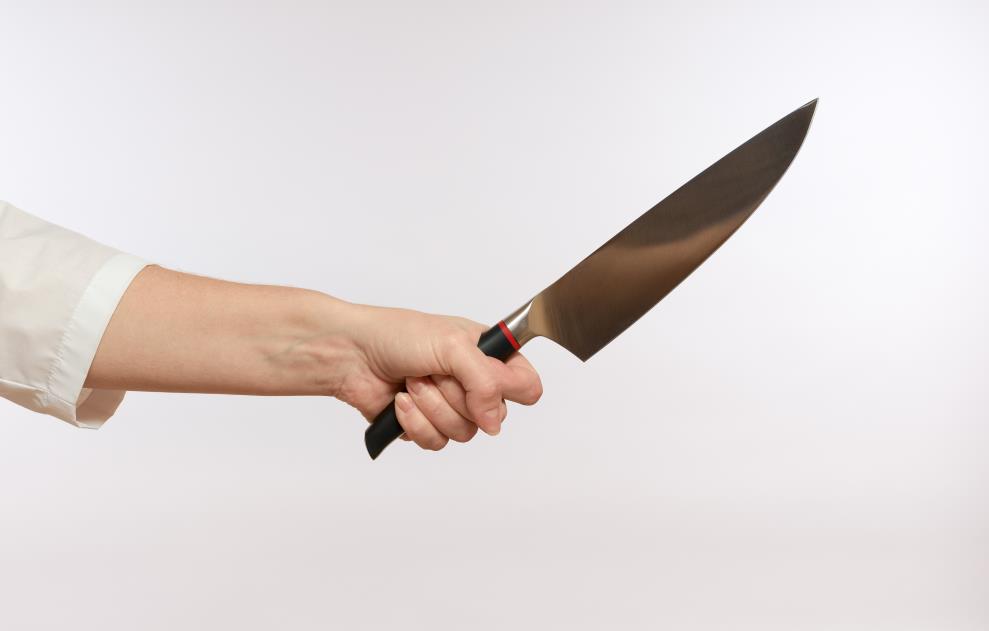Chef’s knives are one of the most important tools every cook must have in their kitchen. With the right chef’s knife, you should be able to cut every ingredient from start to finish throughout the preparation. A good chef’s knife will come as the most versatile blade in your arsenal of kitchen knives that delivers the optimum results in each cut.
There are undoubtedly many reasons to add a proper chef’s knife to your collection. Before you do that, though, make sure to determine what makes the right chef’s knife for your cutting needs. Every chef is different from beginner to pro. Knowing what makes the ideal chef’s knife for your cutting style will lead you to the best chef’s knife.
In this article, we’ll help you find the best chef’s knife, present our recommendations, and go over the things you need to consider before making your purchase.
Table of contents
What makes a chef’s knife the best?
There isn’t a universally accepted best chef’s knife. From what we cut to how we cut, every cook is different. If you’re slicing lots of fruits and vegetables and follow a primarily vegetarian diet, a small chef’s knife could be a good idea. However, it’s not the same if you’re cutting lots of meat and denser ingredients.
Taking a look at the characteristics of the ingredients you cut the most is vital. Doing this alone can clear out the crowded thoughts and help finalize your decision. Not only what and how you cut ingredients are critical, but there is also what comes after you’re done with the knife. Don’t forget to consider the blade’s sharpening, caring, and storing needs – more on what to keep in mind below.
Product recommendations
HDMD Serbian Chef’s Knife
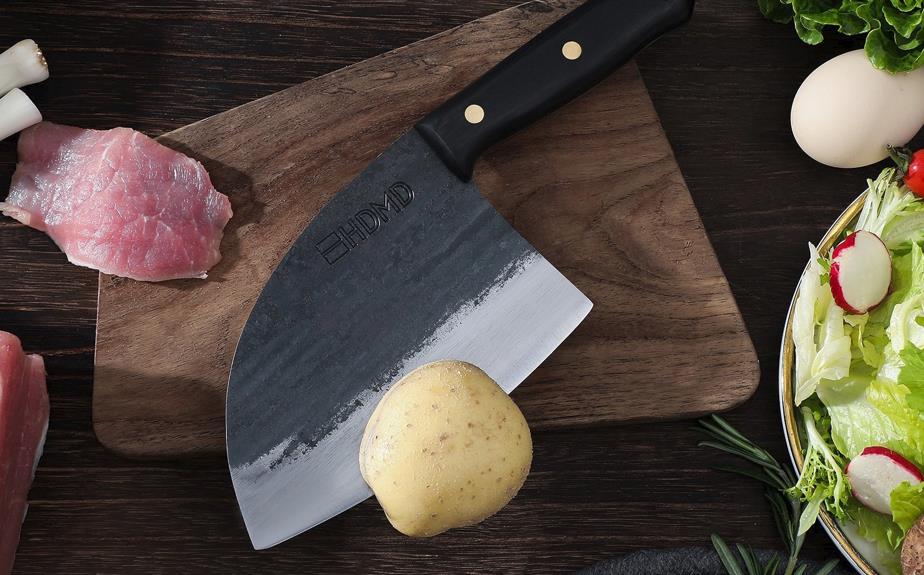
Sturdy, elegant, and adaptable to all your cutting needs. The HDMD Serbian Chef’s Knife has everything you need in a typical chef’s knife with additional features that make it an all-rounder cutting instrument.
Hand-forged with high carbon steel, one of the best materials for making a blade, the HDMD Serbian Chef’s Knife keeps a sharp cutting edge for countless hours.
The blade is heat-treated to endure powerful hits. Continue chopping dense ingredients without worrying about damaging the edge.
Main features
The HDMD Serbian Chef’s Knife shines when it comes to edge-retention. It will keep a razor-sharp cutting edge for hours at a time, not requiring honing every so often. If you’re used to blades made from softer steel, how long the edge stays sharp will be a big surprise. Aside from the edge-retention, it has everything you need in a standard chef’s knife, but with a tad bit extra.
The edge is slightly curved; it won’t feel strange whether you’re accustomed to chopping by rocking the blade over the ingredients or in up and down movements. The blade design might take some time to feel familiar, but there is virtually nothing you can’t cut once you get the hang of it. The hardened high carbon steel blade can cut through denser ingredients easily like a cleaver, where a typical chef’s knife would struggle.
Pros
- A versatile knife you can utilize to work on everything. Cut anything from large meats to small vegetables.
- Superb edge retention makes you not worry about cutting specific ingredients that dull the blade quicker.
- The wide blade enables crushing larger vegetables and fruits quickly. Take a bunch of garlic cloves and crush them all at once for the sauces you’re making.
Cons
- If you prefer your knives lighter, the 353 grams of total weight won’t make it the most ideal.
- The high carbon steel requires more upkeep than others. For example, you can’t just leave it in the sink, waiting to be washed for extended periods.
- The wide blade won’t be any better than a typical chef’s knife for peeling vegetables and fruits or other precision tasks.
Is your choice of chef’s knife something even bigger than this? Check out the HDMD Hand Forged Knife that’s right for heavy-duty tasks.
Top brands to consider
- Global: Recognized by their unique handle designs, Global is a Japanese knife manufacturer.
- WÜSTHOF: WÜSTHOF is a German knife-maker that allows its customers to build their own knife blocks.
- Shun: Sold under Kai USA, Shun Cutlery makes handcrafted high-end Japanese knives that are rather pricey.
- Zwilling: Founded in 1731 in Germany, Zwilling is one of the oldest knife manufacturers in the world that also sells cookware.
Western chef’s knife vs. Japanese Santoku
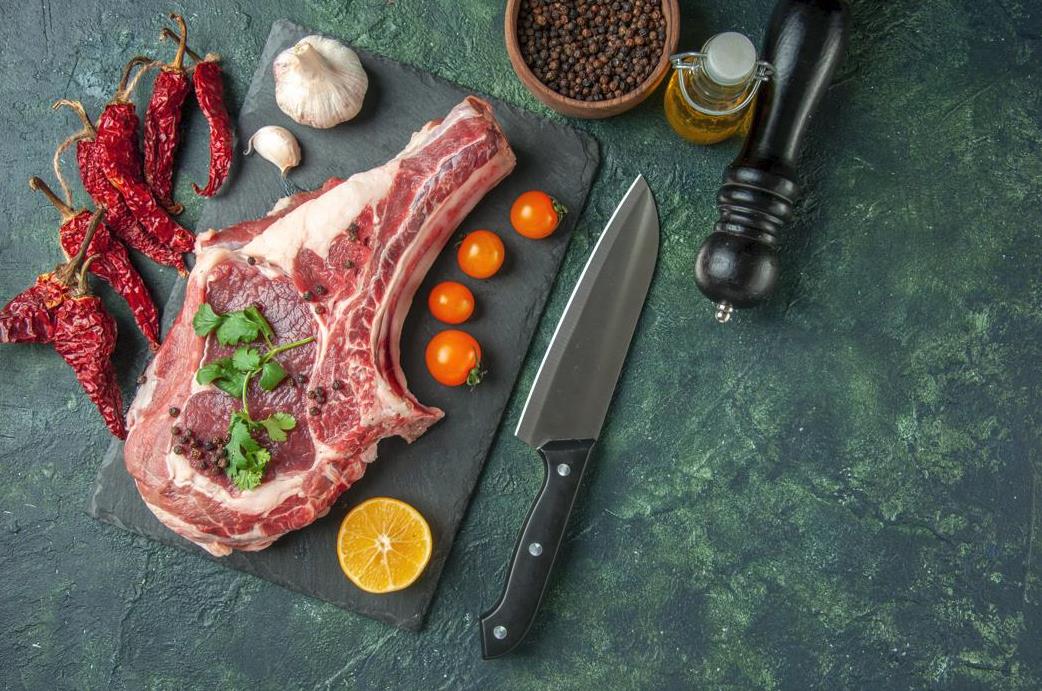
The Japanese santoku knife and the western chef’s knife we’re familiar with have similarities, but they also have their fair share of differences. These distinctions make each knife unique and perhaps a better option than the other for you.
Santoku characteristics
- The blade width is pretty much consistent from heel to the end. The tip is partially pointy for making slits easier.
- Like most Japanese knives, santoku generally features a single beveled blade. There are also double bevel options, but they are harder to find.
- Shorter than most chef’s knives with varieties ranging from 6 to 8 inches.
- The blade is thinner than most other knives, allowing for more delicate slices.
Chef’s knife characteristics
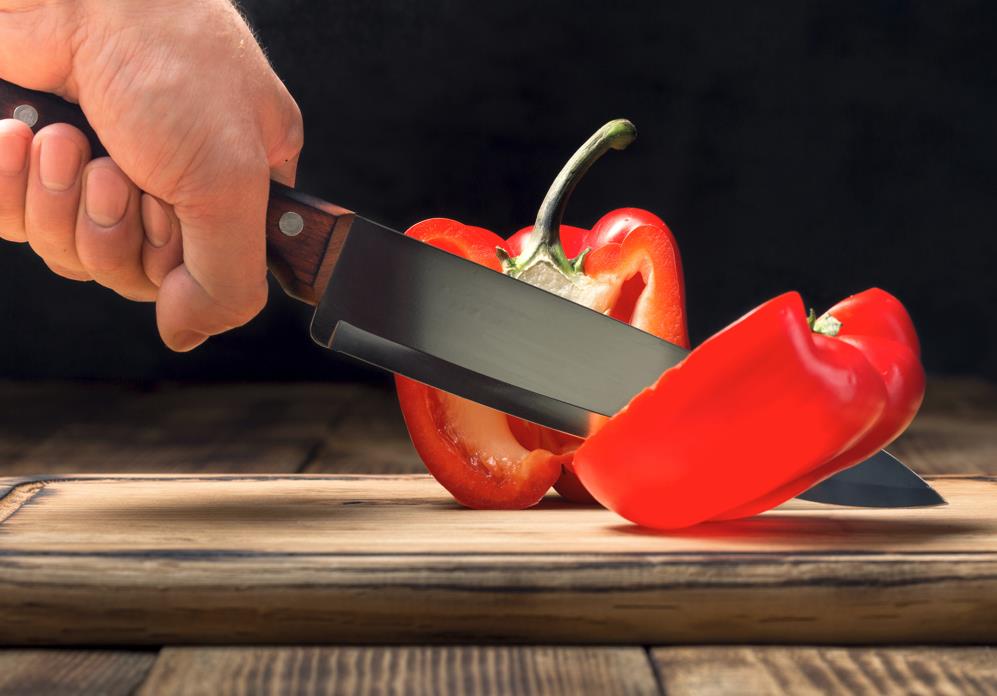
- The broad blade tapers down to a sharp, pointy tip.
- Some varieties have bolsters that add weight to the blade and somewhat protect fingers.
- It comes in a wide selection of blade lengths from 6 to 12 inches.
- Commonly, the blade is double beveled, and some varieties have serrated edges.
The Japanese santoku knife is an exceptional tool to make fine slices. Not to say that a typical chef’s knife can’t, but the thinner blade with the single-beveled edge makes it easier.
Santoku comes in handy to make fine slices, mince veggies, and prepare fish. On the other hand, you can surely do these with a typical chef’s knife, but possibly not as easy and efficient as a santoku. There is also the Japanese gyuto, a similar alternative to both santoku and a standard western chef’s knife.
Another main difference is sharpening. While the edge-retention will mainly depend on the type of steel the blade is made from, sharpening and honing only one side of the santoku is enough. This, however, isn’t a feature exclusively found in Japanese santoku knives. It’s a trait of the single bevel edge. That said, a western chef’s knife that features a single bevel edge will also be the same.
What to consider before buying a chef’s knife
Other than what we’ve talked about so far, like getting a blade suitable for what you cut and how you cut them, there are other things to consider. Keep the following in mind to guide yourself to the best chef’s knife for your kitchen.
Maintenance

Different knives have different maintenance requirements to keep them performing at their best. The essential caring elements are one thing; the special maintenance requirements your knife demands from you are another thing.
For example, carbon steel has properties that resist corrosion, such as patina, but it’s not as resistant as a stainless steel blade. They need more upkeep, such as not leaving them wet or dirty, though you shouldn’t do that with any other knife. You’ll also need to apply food-grade oils to cut off the blade’s contact with air. These are necessary precautions with a carbon steel blade to ensure they don’t oxidize.
Although they won’t rust or deteriorate like steel, a similar scenario applies to ceramic knives. They have fragile blades that can chip or break easily under stress. Storing in a safe environment where they won’t stumble upon other blades is crucial to keep them free from damages.
Additionally, you should always hand wash your kitchen knives thoroughly with dish soap and warm water, dry the blade and handle entirely, and store them in a safe place.
Edge retention
Your kitchen knives are as good as their sharpness. Sharp knives are much more practical and bring joy to each slice. Operating with a sharp blade is also safer than a not-so-sharp knife.
When looking for a chef’s knife, always consider how well the blade keeps an edge. If the blade isn’t as sharp as it was an hour ago, it will pose challenges. High carbon steel has proven to be the best at edge retention for steel chef’s knives. Weigh in if showing a little extra care to a knife is something you’re willing to take in exchange for extra sharpness. If maintaining the knife is too much work, consider opting for a high carbon stainless steel blade.
There are also ceramic knives. Arguably, they are the best for edge retention, as ceramic is a lot harder than steel. However, they aren’t as favorable because they are incredibly fragile. Even dropping it from your countertop to the ground can result in a completely shattered blade.
Blade design
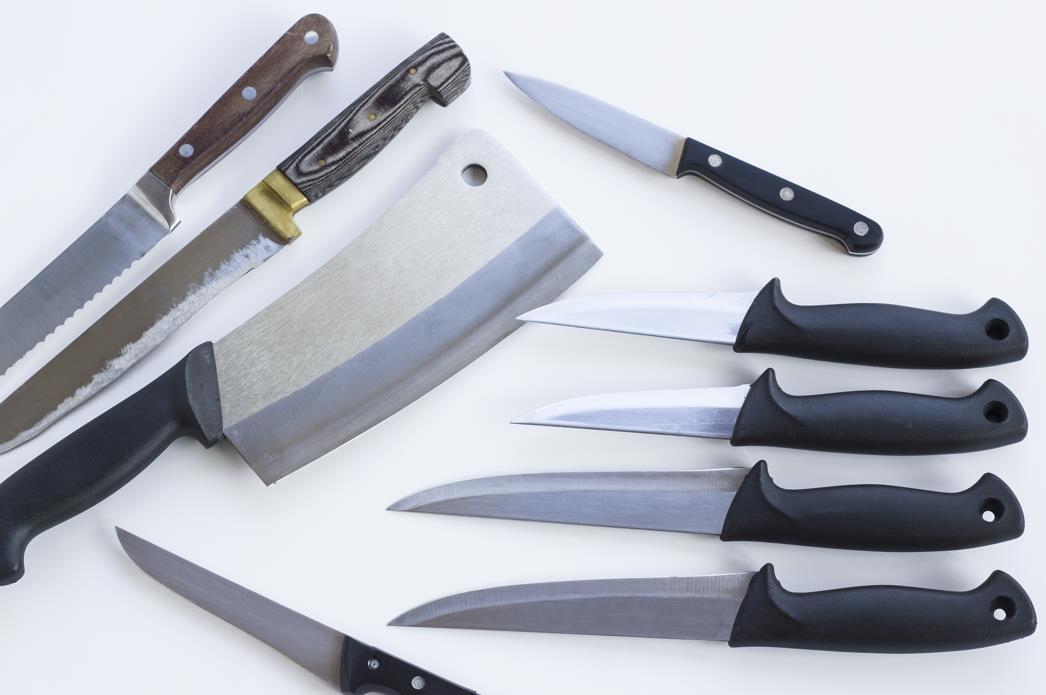
The blade design changes how you cut ingredients. If you’re chopping veggies and fruits by moving the blade up and down, a curvy blade won’t be as comfortable as opposed to a flatter one.
Imagine yourself cutting with the knife and picture if it would be a useful primary cutting device. Take the blade as a whole and see if it will help with the motions you’d do with it. Factor in other features of the blade, such as a pointy tip, bolster, width, and anything else the knife has to enhance your decision.
Handle design
Like the blade design, the handle also matters. If it’s uncomfortable to hold and doesn’t provide a firm grip, even the world’s best blade won’t serve you right.
Some handles are thick; some are boxy; some are hexagonal; some are a part of the blade, and there are many other shapes to mention. Test the current knives you have and see which ones do want to say in your hand the most. Hold the knife in different ways and understand what makes a comfortable grip. The handle is just as important as the blade itself, and getting the wrong one can make you never want to pick up the knife again.
It’s not just the design that’s the most important but also what the handle is made from. Most kitchen knives, including chef’s knives, have wooden handles. Although these are the most common, wood has different varieties that give a distinctive feel and add a personality to the knife.
Weight
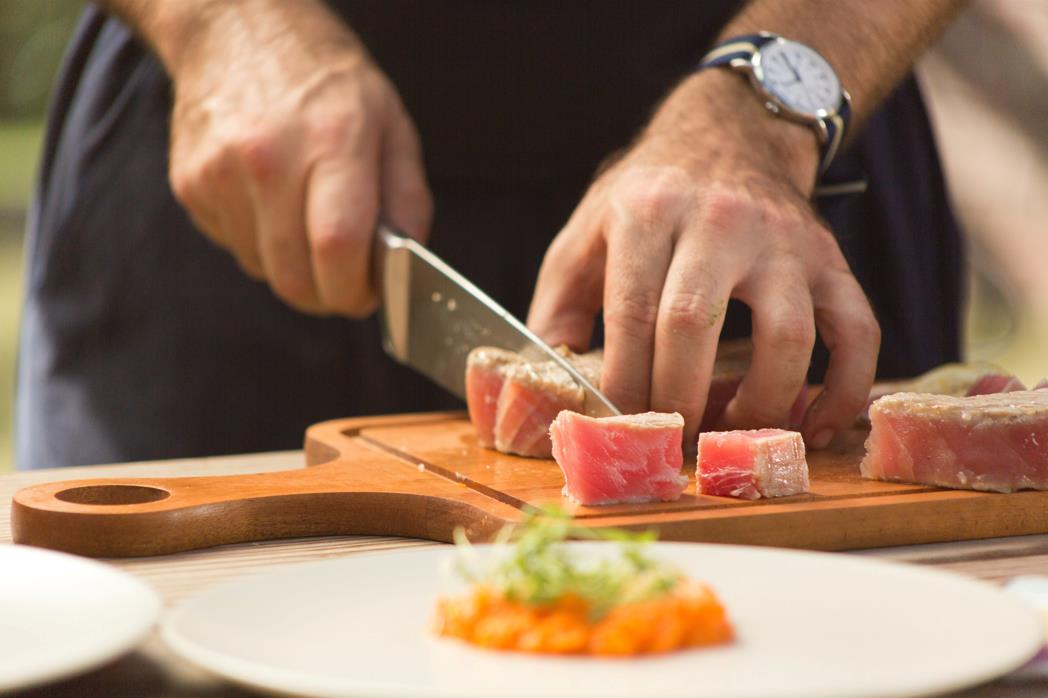
Perhaps one of the most vital things to consider is the weight of the chef’s knife overall. If you’re cooking only a few meals a week, this may not be an important aspect. However, those who use their chef’s knife for hours every day definitely need to evaluate their knives’ weight in general.
The more you use the knife to slice and dice, the heavier it will feel. A knife that has weight to it means more stress on your wrist and shoulders. This would indeed be an unpleasant experience where cooking should be something fun.
Undoubtedly, a heavier blade will aid in cutting, but you will benefit more by sacrificing this and going for lighter knives if you’re expecting to cook for more than two meals a day or so.
Price
A good chef’s knife doesn’t have to cost you a leg and arm. You should spend as much on a chef’s knife as you will use it. There are plenty of decent options for a chef’s knife under $100. If you don’t intend to be a professional cook, you can even get away with something significantly less than that.
Although hand forged blades cost upwards of $100 in most cases, we keep our prices affordable so that everybody can have the convenience of preparing meals with great knives.
Handpicked for you
True cutting power in the palm of your hand
Wrapping up
The bottom line is to identify what and how you would cut with a chef’s knife. Your chef’s knife should take on everything you slice, chop, dice, and mince in the kitchen on a daily basis. If you find yourself switching blades too often, it’s a strong indication that it isn’t the right one for you. Understanding what your needs are and getting a knife that will take care of them will make all the difference in your cutting game.
FAQs
How to care for a chef’s knife?
Since you’ll be using your chef’s knife the most, looking after it is an essential duty. You should always keep your knives clean and dry when storing them. Quickly run tap water over and dry the blade before leaving it in the middle of cooking. Ensure you have the proper storage setup for your knives, such as a block or magnetic strip. Most importantly, sharpen and hone your knives as frequently as they need to keep them at their best.
Should I buy a knife set?
The knife sets are often seen as fantastic deals. You get a bunch of differently sized knives for two-thirds of the price. If you were to buy everything individually, you’d pay a lot more. This makes sets attractive, but what are the chances of you actually needing all of those knives? For most cooks, a chef’s knife matched with a paring knife gets the job done perfectly. Unless you’d get some use out of everything offered in the package, we highly recommend buying your knives separately.
Are high carbon steel knives better than stainless steel?
Both high carbon steel and stainless steel knives have their advantages and disadvantages. Stainless steel is resistant to corrosion and very low maintenance, but they aren’t as hard and sharp as high carbon steel blades. At the same time, high carbon steel knives need more upkeep and can corrode if ignored. It’s up to the user to weigh these ups and downs and determine which one makes a better blade.
Conclusion
Finding the right chef’s knife isn’t straightforward. As you’ll be using it in every aspect of preparing ingredients for meals, it needs to be the right fit for everything. Keeping what we’ve discussed throughout this article will assist you in making the right choice.
Read on the HDMD blog to learn more about kitchen knives, and check out our handmade knives collection to get you the right pair.







